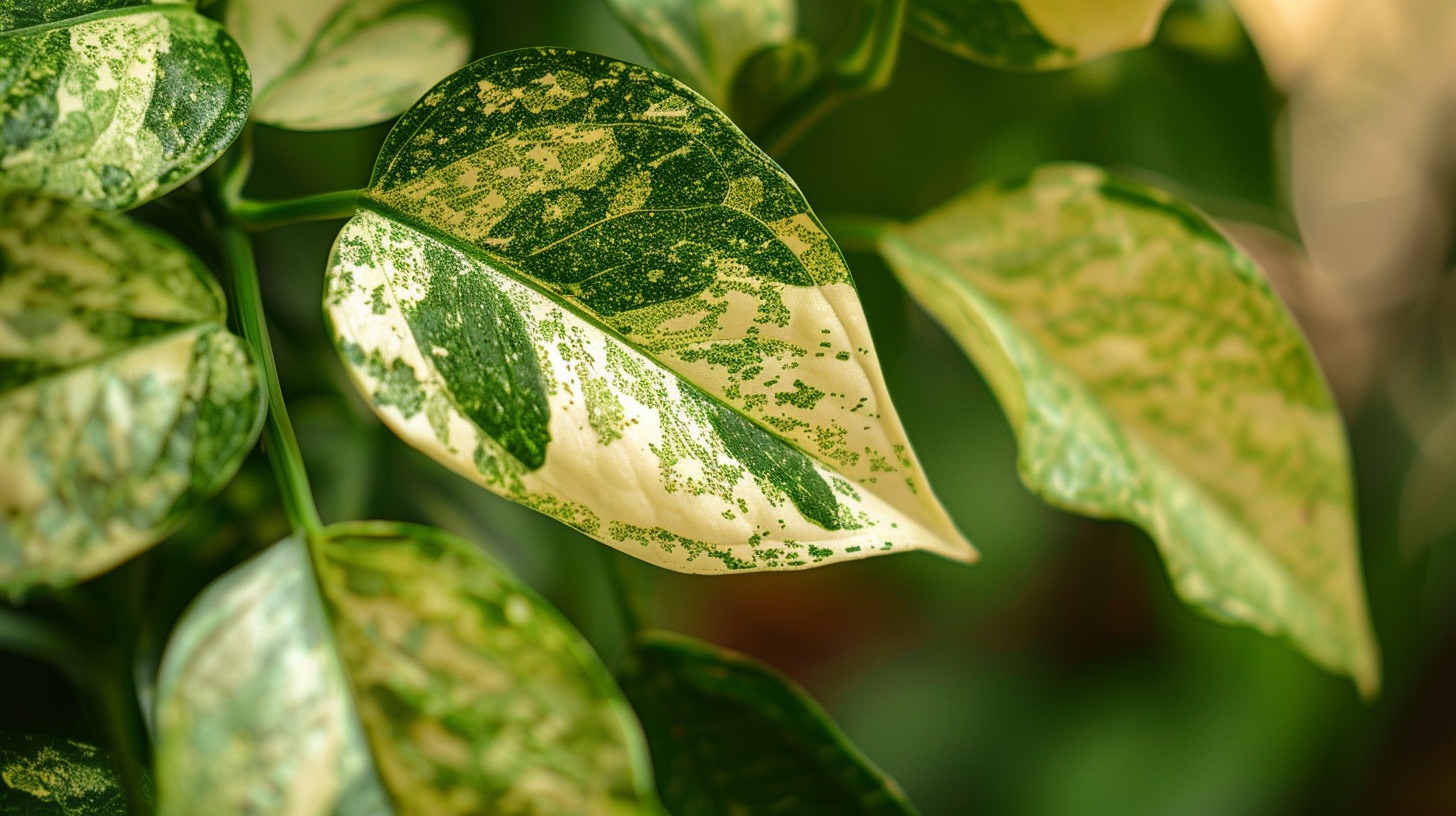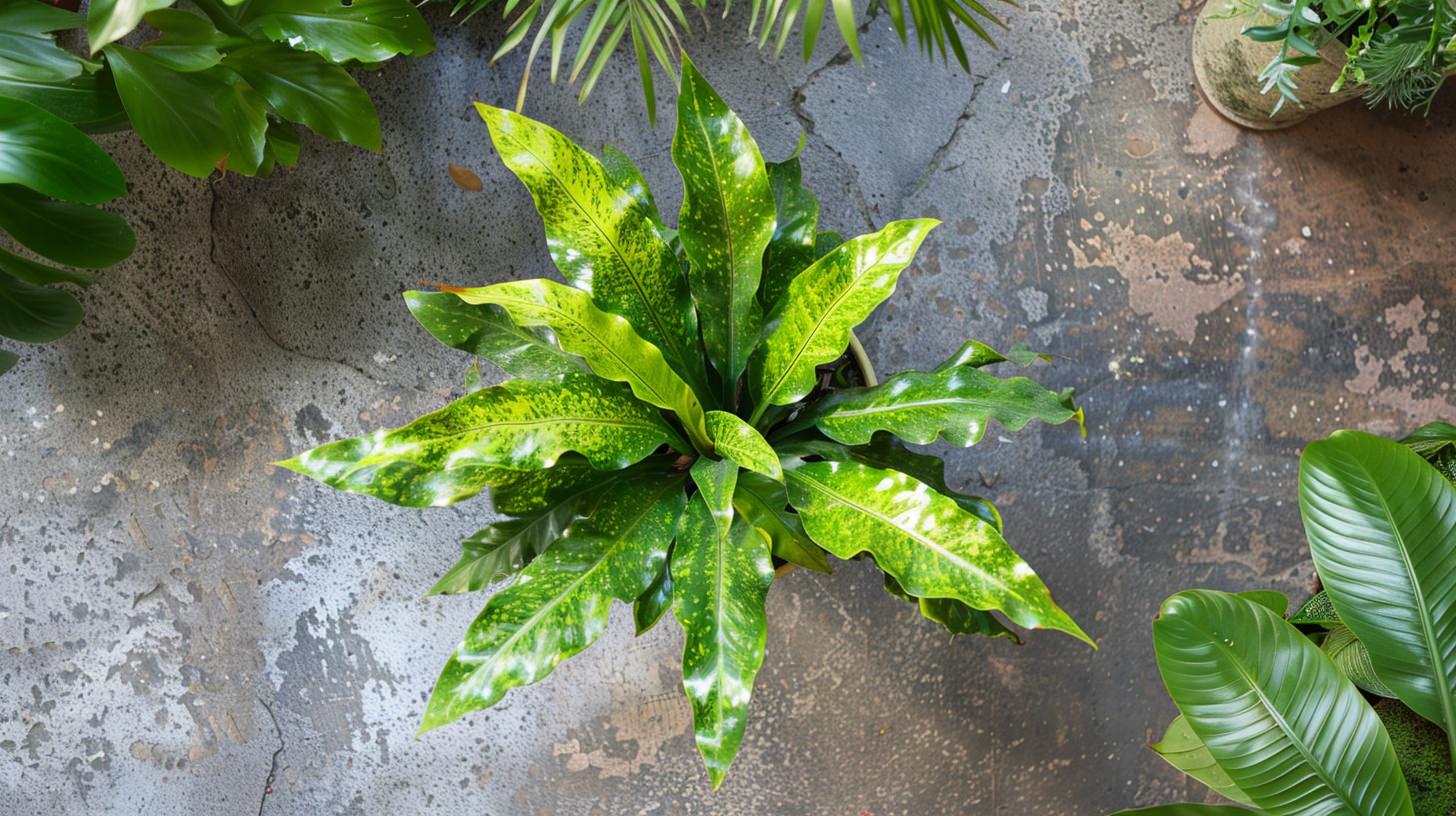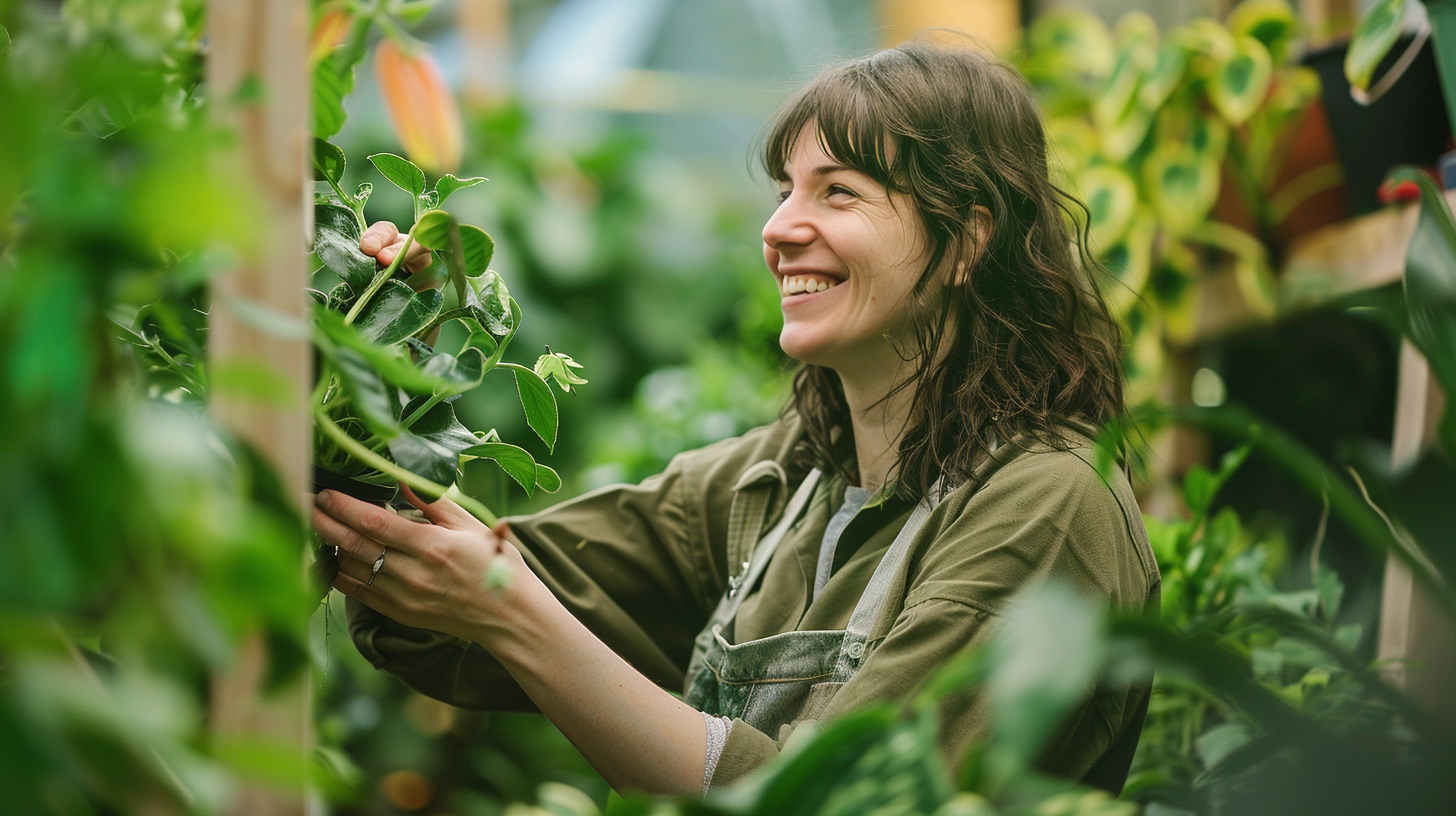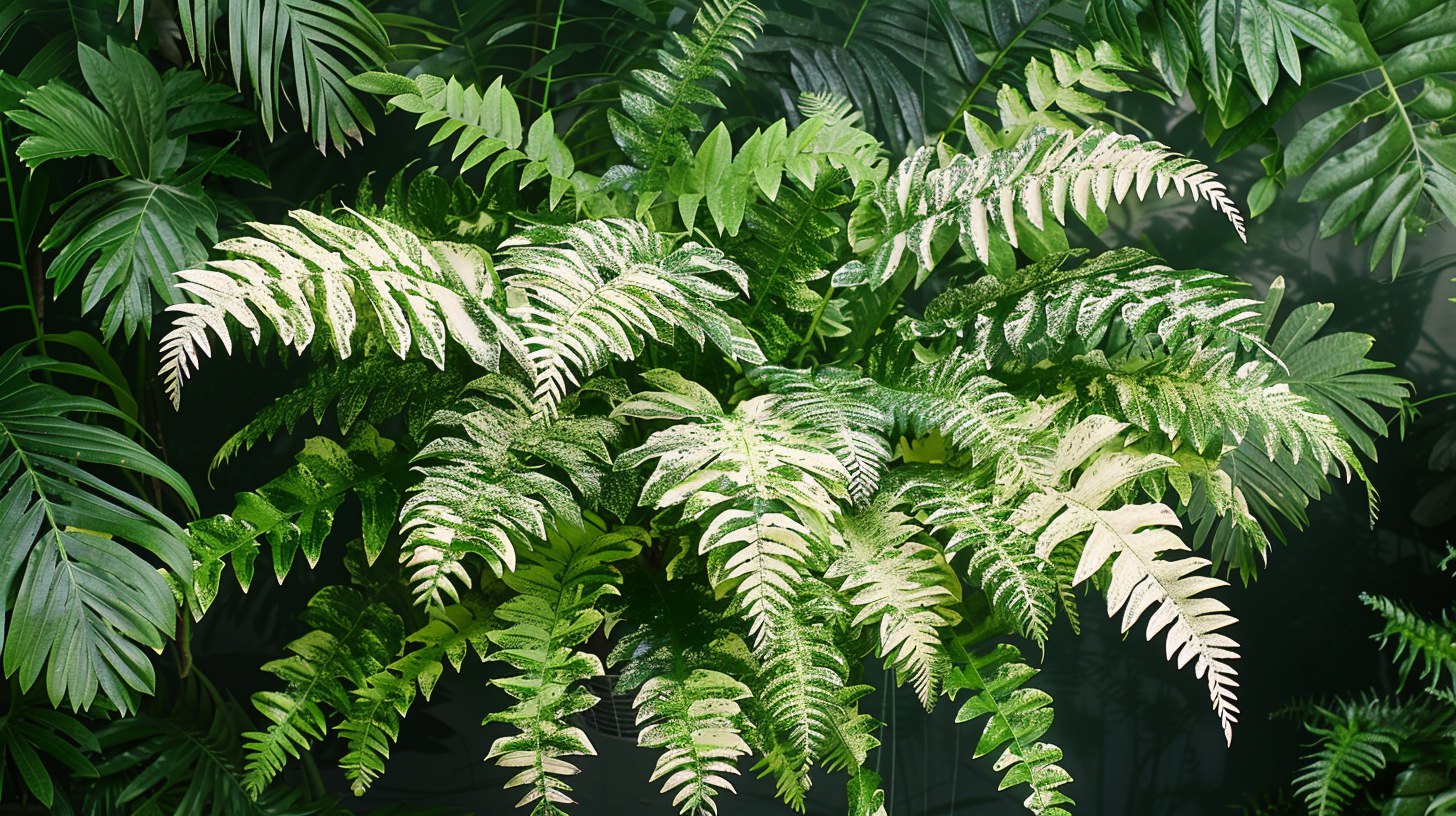
Variegated Plants for Different Climates
Variegated Plants for Hot and Arid Regions
In hot and arid climates, selecting variegated plants that can thrive in these conditions is crucial for a successful garden. Consider these variegated plant options:
- Agave: Variegated agave species, such as the striking Agave americana ‘Marginata’, thrive magnificently in arid landscapes. Their bold, architectural forms and the stunning contrast of their cream and green-striped leaves make them a captivating focal point in any dry garden setting. These resilient plants not only bring a touch of exotic beauty to water-wise gardens but also stand as a testament to the incredible adaptability of nature, flourishing where lesser species might falter. With their low water needs and high impact visual appeal, variegated agaves are an excellent choice for gardeners looking to create a landscape that is both sustainable and spectacular.
- Yucca: Variegated yucca varieties, such as the striking Yucca filamentosa ‘Color Guard’, stand as a testament to the beauty and diversity of nature, providing not just a mere plant presence but a sculptural spectacle in any garden. With their sword-like leaves that boast a vibrant streak of color running down the center, these plants introduce an element of visual intrigue that captures the eye and ignites the imagination. The ‘Color Guard’ in particular, with its luminous yellow stripes set against a backdrop of deep green, acts as a beacon of light, bringing a dynamic contrast and a touch of the exotic to landscapes often dominated by monochromatic greenery. Whether basking in the full sun or nestled in a partially shaded corner, the Yucca filamentosa ‘Color Guard’ thrives, offering a low-maintenance yet high-impact addition to any outdoor space. Its resilience and stunning visual appeal make it not just a plant, but a living piece of art that enhances the beauty of its surroundings throughout the seasons.
- Succulents: In the heart of arid landscapes, where the sun reigns supreme, the Euphorbia tirucalli ‘Sticks on Fire’ emerges as a beacon of vibrant color and resilience. These drought-tolerant, variegated succulents infuse desert gardens with a striking visual intrigue, their fiery hues mimicking the blazing sunsets that paint the horizon. As nature’s masterpiece, they stand as a testament to the beauty and endurance of life in the most challenging environments.
Variegated Plants for Temperate Climates
In temperate regions, variegated plants that can withstand seasonal changes and moderate temperatures are ideal choices for landscape design. Consider these variegated plant selections:
- Japanese Maple: Variegated Japanese maple cultivars, such as the Acer palmatum ‘Butterfly,’ flourish in the temperate embrace of their preferred climates, unfurling a spectacle of colorful foliage that captures the eye and the imagination. These enchanting trees paint the landscape with their vibrant leaves, which dance through shades of green, edged with creamy whites and occasionally kissed with soft pinks. As the seasons change, so too does the mesmerizing display offered by the ‘Butterfly,’ its leaves transforming with the passage of time, from the fresh hues of spring to the fiery tones of autumn. This living tapestry of color not only beautifies gardens but also serves as a testament to the dynamic beauty of nature, inviting onlookers into a world where each leaf tells a story of growth, change, and resilience.
- Hostas: Variegated hosta varieties, like the exquisite Hosta sieboldiana ‘Elegans’, thrive under the cool embrace of shade, bringing an unparalleled elegance to any garden bed. These botanical treasures weave a tapestry of lush greens and creamy whites, creating a serene and visually stunning landscape that beckons onlookers into a world of tranquil beauty. With their broad, heart-shaped leaves, they stand as living sculptures, transforming ordinary spaces into realms of verdant splendor. Whether nestled under towering trees or gracing the edges of shadowy pathways, these shade-loving marvels offer a gentle reminder of nature’s quiet majesty, making every garden they inhabit a haven of botanical grace.
- Variegated Hydrangeas: Hydrangea macrophylla ‘Lemon Wave’ emerges as a spectacle of nature, boasting leaves adorned with a stunning variegation and blooms that radiate with vivacious hues under the gentle embrace of temperate climates. This botanical masterpiece captures the imagination, weaving a tapestry of color and texture that transforms any garden into a vibrant oasis. As the seasons unfurl, ‘Lemon Wave’ reveals its dynamic beauty, with each leaf and flower telling a story of growth, resilience, and the sheer joy of nature’s artistry.
Variegated Plants for Humid Environments
In humid environments, selecting variegated plants that can withstand moisture levels is essential. Explore these variegated plant options suited for humid settings:
- Caladiums: Nestled within the lush underbelly of tropical paradises, variegated caladiums such as the Caladium bicolor ‘Gingerland’ find their sanctuary. These botanical wonders flourish amidst the dense foliage, where the air is thick with humidity and the sun’s rays filter gently through the canopy above. The ‘Gingerland’ variety, in particular, stands out with its striking patterns and colors, painting the landscape with splashes of white, green, and crimson. In these shaded retreats, away from the harsh glare of direct sunlight, they bask in the dappled light, thriving in the warmth and moisture that envelops them. This environment not only nurtures their growth but also accentuates the vibrant hues and intricate designs that make the Caladium bicolor ‘Gingerland’ a mesmerizing spectacle in any garden.
- Coleus: Variegated coleus varieties, like the striking Solenostemon scutellarioides ‘Trusty Rusty’, infuse humid gardens with a tapestry of vibrant hues. These plants, with their flamboyant foliage, paint the landscape in broad strokes of oranges, reds, and greens, transforming ordinary spaces into lush, dynamic vistas. The ‘Trusty Rusty’ in particular, with its unique blend of warm colors, acts as a living beacon, attracting the eye and enriching the garden’s palette. In the dance of light and shadow, these leaves shimmer, reflecting the sun’s rays and casting an enchanting spell over any garden. Beyond their aesthetic appeal, these coleus varieties are a testament to the resilience and adaptability of nature, thriving in the steamy embrace of humidity where others might falter. Their presence is a bold statement, a celebration of life’s vividness in the canvas of the garden.
- Bromeliads: Variegated bromeliads, particularly the stunning Neoregelia carolinae ‘Tricolor’, infuse any humid indoor or outdoor space with an undeniable tropical allure. These vibrant plants captivate with their dazzling display of colors, effortlessly transforming mundane environments into exotic retreats. With leaves painted in a mesmerizing palette of green, red, and yellow, they not only serve as a visual feast but also as a testament to nature’s incredible artistry. As they thrive, they invite onlookers into a world where the vibrancy of the tropics is within arm’s reach, turning ordinary spaces into lush, verdant paradises that beckon with the promise of escape and relaxation.
Frequently Asked Questions About Variegated Plants
What causes the variegated patterns in plants?
Variegated patterns in plants result from genetic mutations that affect chlorophyll production, leading to color variations in the foliage.
Do variegated plants require special care compared to non-variegated plants?
Variegated plants may have slightly different care needs, such as requiring more indirect light to maintain their patterns and avoiding over-fertilization, but overall, their care is similar to non-variegated plants.
Can variegated plants revert to solid-colored leaves?
Yes, variegated plants can revert to solid-colored leaves due to factors like insufficient light, nutrient imbalances, or genetic instability.
Are variegated plants more prone to pests and diseases?
Variegated plants are not inherently more prone to pests and diseases than non-variegated plants, but maintaining optimal growing conditions can help prevent issues.
How can I propagate variegated plants to expand my collection?
Variegated plants can often be propagated through methods like stem cuttings, division, or layering, allowing you to increase your variegated plant collection with ease.


